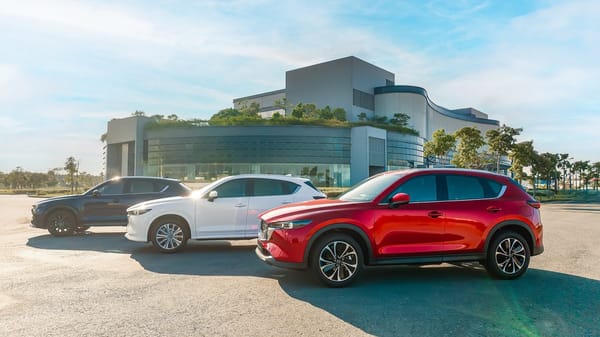When To Buy A Car Financially: A Guide For Budget-conscious Parents

For many parents, buying a car is more than just acquiring a vehicle—it's an investment in the safety, convenience, and well-being of their family. However, for budget-conscious parents, navigating the financial aspects of car buying can be challenging. Understanding when to buy a car financially and how to make the most of your resources can significantly impact your budget and overall financial health.
This comprehensive guide aims to provide practical information, tips, and strategies to help parents make informed decisions about car purchases. Whether you're looking for a family-friendly vehicle, trying to maximize savings, or determining the best time to buy, this guide covers everything you need to know without overpromising or promoting any particular products.
Table of Contents
- Assessing Your Family's Car Needs
- Should You Buy New or Used?
- The Best Times of Year to Buy a Car
- How to Set a Realistic Car Budget
- Financing Options: Loans, Leases, and Cash Purchases
- Understanding the True Cost of Car Ownership
- How to Negotiate a Car Deal
- Exploring Certified Pre-Owned Programs
- When to Buy vs. When to Wait
- Managing Car Insurance Costs
- The Role of Fuel Efficiency in Cost Savings
- Finalizing the Purchase: What to Expect
1. Assessing Your Family's Car Needs
Before deciding when to buy a car, it's important to assess what your family truly needs in a vehicle. Do you need a larger car for a growing family, or are you looking for something more fuel-efficient for commuting? Consider factors like safety features, cargo space, seating capacity, and long-term durability.
Key Considerations:
- Safety: Look for cars with high safety ratings, especially if you’re driving with children.
- Size and Storage: Evaluate how much room you’ll need for car seats, strollers, groceries, and family outings.
- Fuel Economy: Choose a car that fits your driving habits and budget, considering both gas prices and potential electric or hybrid options.
By focusing on your family’s specific needs, you can avoid overbuying features that aren’t necessary and concentrate on the aspects that truly matter.

2. Should You Buy New or Used?
One of the biggest decisions for budget-conscious parents is whether to buy a new or used vehicle. Each option has its pros and cons, and your choice will depend on your financial situation, car needs, and long-term goals.
Buying New:
- Pros: New cars come with warranties, the latest technology, and are less likely to need immediate repairs.
- Cons: New cars depreciate quickly—losing 20-30% of their value in the first year—making them a less cost-effective option for some families.
Buying Used:
- Pros: Used cars are generally more affordable and don’t depreciate as quickly. You can often find a car with many years of life left at a lower price.
- Cons: Used cars may require more maintenance, and warranties might be limited or non-existent.
When to buy new vs. used largely depends on your budget, how long you plan to keep the car, and your comfort level with potential repairs. Parents on a tighter budget may find that a reliable used car offers better value without the steep depreciation of a new car.

3. The Best Times of Year to Buy a Car
Timing can make a significant difference in how much you pay for a car. Dealerships and manufacturers offer various incentives throughout the year, and certain times are better for budget-conscious buyers to make a purchase.
End of the Month/Quarter: Salespeople often have quotas to meet, making the end of the month or quarter a good time to negotiate for a better deal. If they’re close to hitting their target, they may be more willing to offer discounts or incentives.
End of the Year: The final months of the year, particularly November and December, tend to be the best time to buy. Dealerships want to clear out old inventory to make room for next year's models, which means discounts, incentives, and promotions are more abundant.
Holidays: Car dealerships often offer special promotions during major holidays like Memorial Day, Labor Day, and Black Friday. While not all sales are great, doing your research can lead to significant savings.
Being strategic about when you shop for a car can save you thousands of dollars, so if your current vehicle can hold out until one of these periods, it may be worth waiting.
4. How to Set a Realistic Car Budget
As a parent, setting a car budget isn’t just about the sticker price—it’s about understanding your long-term financial commitment. A well-planned budget will ensure that your car payments, insurance, maintenance, and fuel costs don't strain your household finances.
General Rule of Thumb: Financial experts often suggest that you should spend no more than 15% of your monthly income on transportation costs, including car payments, insurance, and fuel.
Down Payment: The more you can put down upfront, the less you'll need to finance, reducing both the interest you'll pay and your monthly payments. Aim for a down payment of at least 20% to avoid being "upside-down" on the loan.
Monthly Payments: Consider not only how much you can afford in monthly payments, but also how long you're comfortable committing to those payments. A shorter loan term means higher payments but lower overall interest costs.
By setting a realistic budget and sticking to it, you can ensure that your car purchase doesn’t negatively impact your family’s financial well-being.
5. Financing Options: Loans, Leases, and Cash Purchases
Once you've set your budget, it's time to explore your financing options. Each method of financing comes with its pros and cons, and the right choice depends on your personal financial situation.
Car Loans: For most buyers, a car loan is the most common financing method. When taking out a loan, it's important to shop around for the best interest rates. Your credit score will significantly impact the rates available to you, so improving your credit before applying can save you money.
Leasing: Leasing can be an appealing option for parents who want a new car every few years or need lower monthly payments. However, leases often come with mileage limits and fees for excess wear and tear, which can be a concern for families with small children.
Cash Purchases: If you have enough savings, paying for a car in cash can be the most cost-effective option, as it allows you to avoid interest altogether. However, this may not be feasible for many families, especially if it depletes your emergency savings.
Choosing the right financing option requires balancing your current budget with your long-term financial goals. For parents, it’s crucial to leave room for other family expenses like education, health care, and savings.
6. Understanding the True Cost of Car Ownership
The sticker price is just one part of the total cost of owning a car. Other expenses like insurance, maintenance, fuel, and depreciation all add up and can significantly impact your budget over time.
Insurance: Family vehicles, especially larger SUVs and minivans, can come with higher insurance premiums. Shop around for quotes before you buy to ensure you’re getting the best deal.
Maintenance and Repairs: Regular maintenance, such as oil changes, tire rotations, and brake replacements, is essential for keeping your car running smoothly. Budget for these routine expenses and prepare for the occasional repair, especially if you’re buying a used car.
Fuel: Consider the fuel efficiency of the car you’re buying and how much you’ll be driving. More fuel-efficient cars or hybrid/electric options can save you money at the pump.
Depreciation: New cars lose value quickly, with most cars losing around 60% of their value in the first five years. While depreciation doesn’t directly affect your day-to-day budget, it’s important to consider if you plan to sell or trade in the car later.
By understanding the true cost of ownership, you can avoid unpleasant financial surprises and ensure your car fits within your family's long-term budget.
7. How to Negotiate a Car Deal
Negotiating is a key part of getting the best deal on a car, but it can be intimidating, especially for first-time buyers or those who aren't familiar with the process. However, with a little preparation, you can negotiate confidently and save a significant amount of money.
Do Your Research: Before stepping foot in a dealership, research the fair market value of the car you're interested in. Websites like Kelley Blue Book and Edmunds can give you a good idea of the price range.
Be Ready to Walk Away: Don’t be afraid to walk away from a deal if it doesn’t meet your budget. There are plenty of cars available, and it’s more important to get the right price than to make a rushed decision.
Focus on the Total Price: Dealers often try to focus negotiations on the monthly payment, but it’s better to negotiate the total price of the car. A lower monthly payment might seem like a good deal, but it could mean you’re paying more in interest over the life of the loan.
Negotiating can be stressful, but it’s a crucial step in ensuring you don’t overpay for your car.
8. Exploring Certified Pre-Owned Programs
For budget-conscious parents who want the peace of mind of buying a new car but at a lower price, certified pre-owned (CPO) vehicles are a great option. These cars are typically a few years old, have low mileage, and have been thoroughly inspected and refurbished by the manufacturer.
Benefits of CPO Cars:





